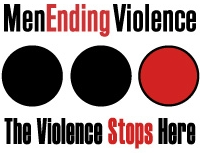
As temperatures rise across Canada, so too does the risk to women, girls, and gender-diverse people living with violence. This isn’t speculation—it’s a well-documented and increasingly urgent reality. A recent feature in The Narwhal (August 2025), titled “As temperatures spike, so do reports of domestic violence in Canada,” (hyperlink) makes a timely intervention by connecting climate change with gender-based violence (GBV). It’s a link that has long been ignored in Canadian policy but one that frontline workers have seen for years.
The article highlights how climate stress, especially extreme heat, is not just an environmental or infrastructure issue. It is a public safety crisis, with real consequences for survivors of intimate partner violence, especially those already marginalized by poverty, racism, or housing insecurity.
BWSS was one of the organizations interviewed for the article, and we welcome the opportunity to build on its insights. But we also see space for a deeper and more systemic analysis, one that names misogyny and patriarchy as the root causes of violence and recognizes the climate crisis not only as an ecological disaster, but as a gendered one.
Below, we offer a critical reflection on the article and explore how climate change intensifies the structural conditions that allow gender-based violence to thrive.
Strengths of the Article
Timely and Intersectional Framing
The Narwhal’s piece does important work by bridging two urgent crises, climate change and intimate partner violence and naming the connection between them as both a public safety and a public health issue. This framing helps move the conversation beyond individual “incidents” toward understanding GBV as part of a larger social and political pattern, one that is being exacerbated by environmental collapse.
By doing so, the article joins a growing movement of scholars, advocates, and survivors who understand that gender-based violence is not separate from climate change, economic inequality, or colonial displacement. These crises are interlocking and so must be our solutions.
Data-Backed Storytelling
One of the strengths of the article is its blend of statistical data with stories from the front lines. National trends showing seasonal spikes in domestic violence are paired with insights from shelters like SOFIA House and BWSS, grounding the findings in lived experience. This combination makes the issue legible both to policymakers and to the broader public.
Importantly, the article does not rely on vague notions of “tension” or “conflict.” Instead, it links heatwaves to real-world outcomes: increased calls for help, greater control by abusers, and rising femicides. This clarity matters.
Intersectional Awareness of Vulnerability
The article makes clear that heat does not affect everyone equally. Women living in unsafe housing, without air conditioning or financial autonomy, are especially vulnerable. Survivors who face multiple forms of oppression—Indigenous women, Black and racialized women, women with precarious immigration status—face greater risks and fewer options.
This is not just a story about heat. It’s a story about power: about who holds it, who abuses it, and how our systems repeatedly fail to intervene.
Areas for Deepening
While the article is a welcome contribution, there are critical dimensions that deserve more attention—especially if we are to meaningfully act on what it reveals.
From Correlation to Causality
The article notes the statistical correlation between rising temperatures and domestic violence but stops short of interrogating the deeper mechanisms. Does heat biologically increase aggression? Or is it simply the trigger that activates violence already embedded in patriarchal systems?
From a feminist perspective, we must be cautious not to suggest that heat causes abuse. Misogyny and patriarchy are root causes. What heat does is intensify existing risk factors: economic pressure, emotional volatility, housing stress, and the entitlements bred by misogyny. When an abuser feels loss of control whether because of finances, climate stress, or ego it is women and children who pay the price. Climate is not the cause of violence. Patriarchy is.
Regional and Structural Specificity
The article gestures to differences across provinces, but a deeper analysis of BC, for example, would have been instructive. In BC, we’ve seen fatal outcomes in urban centres like Kelowna, but also in rural areas where services are virtually inaccessible. Northern regions face both extreme weather and a lack of safe housing, police accountability, or Indigenous-led response systems.
The same heatwave in Vancouver looks very different in Bella Coola, Prince George, or Fort St. John. Yet too often, public policy treats GBV and climate as “urban” problems, ignoring regional inequities in infrastructure, funding, and political attention.
Constraints on Frontline Services
BWSS and others were consulted for the article, but the piece could have gone further in naming how underfunding, fragmented planning, and systemic neglect limit our ability to respond to heat-related violence. Some shelters do not have air conditioning. Others cannot relocate survivors during wildfires. Mobile units often lack staff and funding. And the core funding we rely on has not been adjusted to reflect new climate realities.
Emergency management frameworks rarely consider survivors’ needs in evacuation plans or cooling centre design. This is not just an oversight—it is a political choice that reflects how gender-based violence continues to be treated as secondary, even in a crisis.
Naming the Root: Misogyny and Patriarchy
What’s missing from most mainstream analyses—including this one is an explicit naming of the cultural and institutional conditions that allow violence to flourish in the first place. At its core, intimate partner violence is not about heat. It is about male entitlement. It is about the belief that women are property. It is about the systems, legal, economic, social, that reinforce and excuse that belief.
The climate crisis doesn’t invent those dynamics. It magnifies them. It isolates survivors, increases financial strain, disrupts support systems, and gives abusers more power. And in a country where the majority of survivors never report to police, and where only a fraction of cases are prosecuted, the message remains clear: violence against women is tolerated.
If we want to end that tolerance, we must confront the whole system and not just its symptoms.
Climate Crisis as a Product of Patriarchy and Colonialism
The climate crisis is not a natural disaster, it is a man-made one, driven by centuries of extractive capitalism, colonial land theft, and patriarchal domination. The same logic that treats women’s lives as disposable treats ecosystems as expendable. Corporations profit while communities are displaced, just as abusers maintain control while systems look the other way. Fossil fuel expansion, unsustainable development, and the criminalization of land and water defenders many of them Indigenous women are not separate from gender-based violence. They are parallel expressions of the same violent systems. To confront one without the other is to miss the full picture of harm and the full scope of resistance.
What Needs to Change – Urgent Actions
- Risk Assessment Must Be Mandated
Governments must require risk assessments across all sectors—police, Crown, MCFD, shelters—so that heat, housing, and coercive control are understood as part of a larger pattern of escalating risk. - Disaster Planning Must Centre Survivors
Emergency response systems must include gender-based violence protocols, including safe shelter options during evacuations and public alerts that do not endanger women trying to flee. - Frontline Services Must Be Climate-Resilient
That means cooling infrastructure, flexible emergency funding, mobile outreach, and staffing plans that recognize the dual impact of violence and environmental strain. - Housing and Utility Policy Must Be Survivor-Centred
Survivors need access to affordable housing that can withstand heatwaves and wildfires—and protection from abusers who use utility bills and housing insecurity as tools of control.
The Narwhal has opened the door to a necessary conversation. It’s now up to policymakers, funders, and all levels of government to walk through it and to recognize that public safety, climate justice, and gender justice are inseparable.
When the heat rises, it reveals the cracks in our systems. But the root cause is not the weather. It’s the violence that patriarchy makes possible—and the political will to look away.
It’s time we stopped looking away.
Read – As temperatures spike, so do reports of domestic violence in Canada




